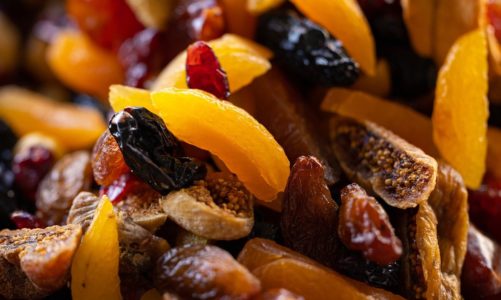Dehydrating herbs, fruits, veggies, beef jerky, and nuts is a great way to prepare food for long-term storage. The same is true for seeds. Not only can seeds be dried and stored for future planting, but they make excellent snacks that are healthy and nutritious for the whole family. Drying seeds for snacking is straightforward enough, but drying them to save, is not as simple as one may think. A question often asked is whether one can use a dehydrator to dry seeds safely and effectively for saving? In this article, we look at the 2 methods to dry seeds for saving.
Why should seed dry before storage?

Seeds may come in all shapes and sizes, but they all contain moisture. By removing the moisture you essentially dehydrate them. Inside each seed is the endosperm, a substance that provides food for the newly germinated plant. Learning how to dry seeds requires some skill. Removing too little moisture from the seed could result in rot or mold formation while overdrying may result in the destruction of the endosperm. A moisture rate of between 5% to 8 % is regarded as good, depending on the moisture content of each species. For most of us, it will be the best guess between drying them well but also not completely.
2 methods for dehydrating seeds
There are 2 ways of drying seeds. One simple method involves airdrying and the other the use of a dehydrator. Each method comes with its own set of pros and cons. Before drying can take place, make sure to prepare your seeds by giving them a good wash so that mold does not form, especially if they come from a wet fruit or vegetable. Pat your seeds as dry as possible using a clean paper towel, while making sure none of the towels remain stuck to the seeds. You can skip this step if seeds come from dry seed pods.
Airdrying seeds for saving
- Pros
- Safest method
- Free energy
- Cons
- Time-consuming
The traditional way of drying seeds is simply by them in the open air. This method is also considered the safest method but also time-consuming depending on the type of seeds you are drying. The drying process can take anything from 2 to 3 days or up to a week depending on location and seed type. The smaller the seed, the easier it will dry. Drying tomato seeds using this method is best. A dry sunny spot, free of humidity is ideal. If the location you choose is outside, you may want to cover your seeds with netting in order to provide protection from insects, birds, or wind. A solar dehydrator can be used to dry seeds in the sun.
Spread your bounty of seeds evenly on a dryer tray, separating them from each other as much as possible. Make use of wax paper so that the seeds won’t stick to the surface when drying. The other benefit of using these types of paper is that any moisture quickly disappears.
Using a dehydrator to dry seeds for saving
- Pros
- Time-saving
- Cons
- Risk of damage by overdrying
- Tomato seeds are too delicate to dry in a dehydrator
Drying seeds in a dehydrator for saving seeds require some skill. The trick with using a dehydrator to dry seeds is using the lowest heat and only certain types of seeds. Larger seeds like pumpkin, beans, and squash are ideal, while small and delicate tomato seeds are not. Pepper seeds can be dried using a dehydrator at a temperature not higher than 95°F (35°C). Do not hurry to dry at the lowest temperature. Give your seed enough time to dry slowly. For example, if beans are dried out too quickly, they cannot be used for saving.
Last thoughts on using a dehydrator to dry seeds
Using a dehydrator to dry seeds for snacking is a quick and easy process. To make deliciously dried pumpkin seeds using assisted drying will usually take no longer than 2 hours at a temperature of 120°F (48°C). Using a dehydrator to dry seeds for saving, however, requires much lower temperatures and longer drying times. If you are going to dry seed on a regular basis, we recommend you opt for a machine with an adjustable thermostat, an inbuilt timer, and an automatic shut-off function. Even with a dehydrator, seed drying for long-term storing requires patience. Practice will make perfect.
We recommend these great books and dehydrators:
Magic Mill Food Dehydrator Machine (1000 Watts)
COSORI Premium Food Dehydrator (600 Watts)
Excalibur 9-Tray Electric Food Dehydrator (600 Watts)
NESCO FD-1018A Gardenmaster Pro Food Dehydrator (1000 Watts)
The Complete Guide to Saving Seeds
322 Vegetables, Herbs, Fruits, Flowers, Trees, and Shrubs Paperback | 2011
by Robert E. Gough

Seed to Seed: Seed Saving and Growing Techniques
for Vegetable Gardeners, 2nd Edition Paperback | 2002
by Suzanne Ashworth

Other enjoyed these too:
Can you use a food dehydrator outside?
Do food dehydrators kill bacteria?
How to dehydrate fruit naturally.
Do food dehydrators make food crispy?
Find out how to dehydrate fruit quickly.
Affiliate Disclosure: Some of the links that appear on this site are affiliate links. We may receive a small commission when you make a purchase. These commissions help to improve this site and to fund further research. The buyer does not pay any commission whatsoever but is an arrangement between the supplier and this site. Our selection of products is carefully curated and includes only those products we believe in.
Disclaimer and Cautionary Note: Sunny Life Mag is a digital magazine for entertainment. The contents of this website are for informational and entertainment purposes only and do not constitute expert advice. Not any of the products recommended in the articles have been independently tested for safety. Report all health and safety issues related to the products mentioned in articles to the manufacturer directly.
Photo by Eco Warrior Princess on Unsplash
Photo by zorica radosavljevic on Unsplash



